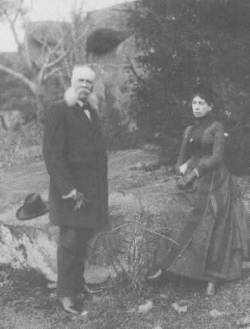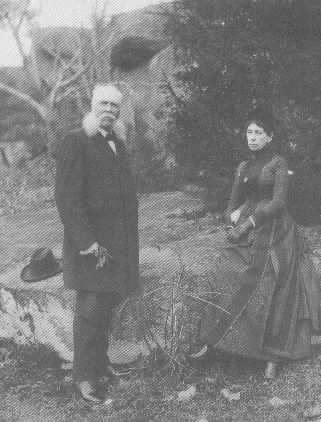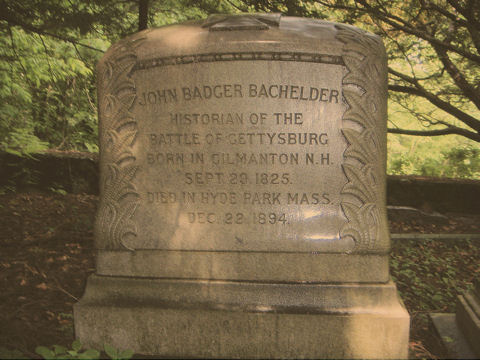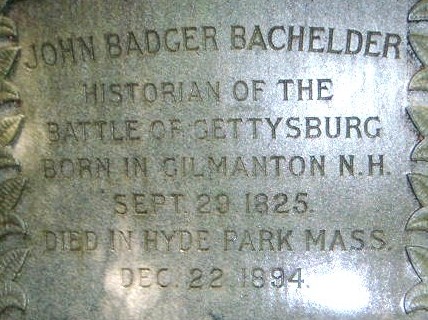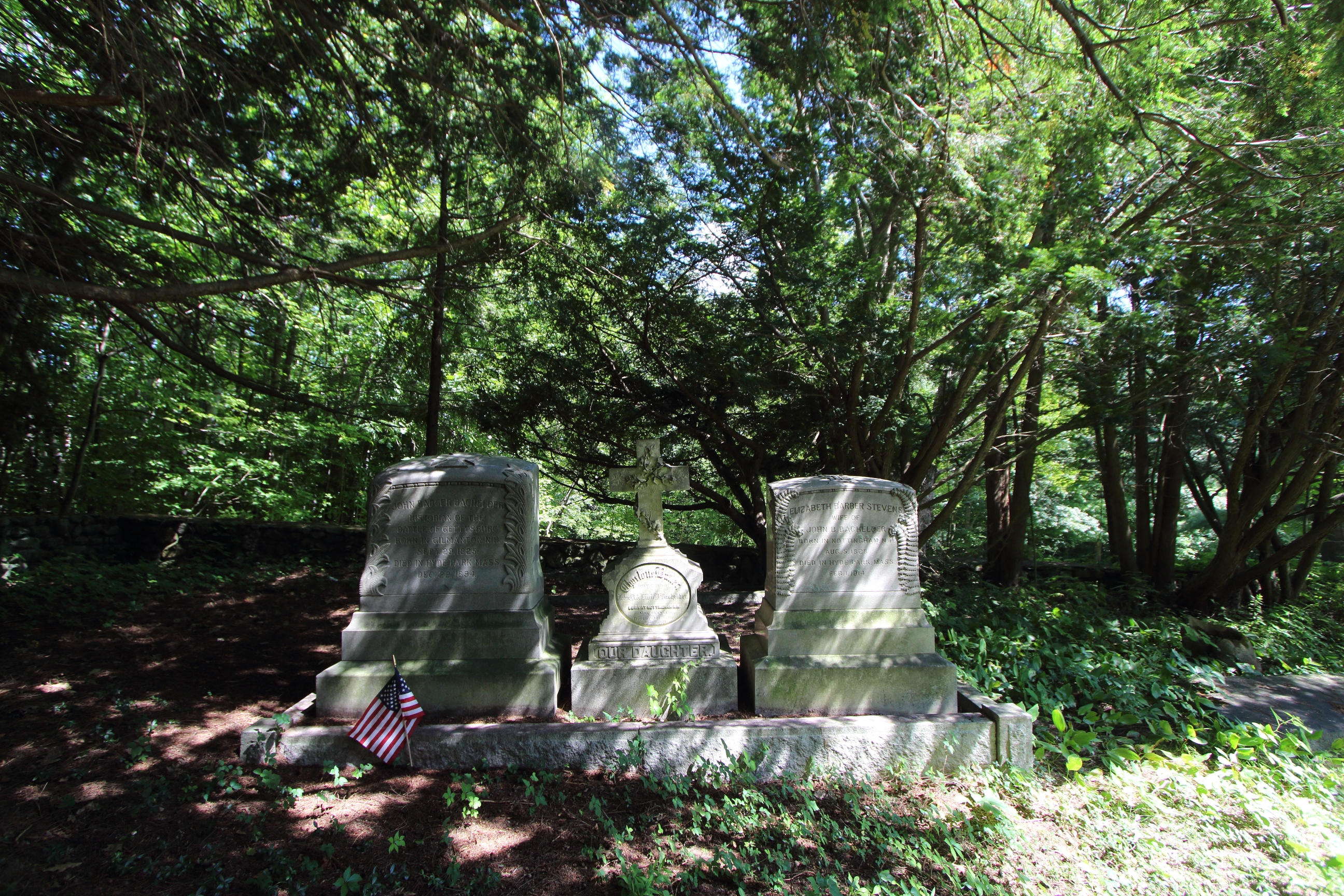John was born in 1825 in Gilmanton, N.H. and was educated at Capt. Alden Partridge's Military School in Pembroke and then at the academy in Gilmanton. He later taught at the military academy in Reading, Pa., becoming the principal in 1851. In 1852 he was appointed colonel in the Pa., State Militia.
John returned to New Hampshire in 1853 and married Elizabeth Barber Stevens, and became an artist. When the Civil War started be had collected notes on Bunker Hill, planning to paint a large canvas of the battle. Knowning that it was difficult to obtain accurate information on battles, he chose to accompany the Army of the Potomac in order to interview men after the battles, and to study the terrain on which the battles were fought. He took extensive notes and made countless drawings. He was well received by the army commanders.
Gettysburg proved to be his most valuable topic. After the battle he conducted interviews, made many drawings, and drew maps of the topography. The battle would consume the rest of his life.
In 1870 he painted a massive work entitled "The Repulse of Longstreet's Assault at the Battle of Gettysburg," which measured 7.5 feet by 20 feet. In 1875, he published a guidebook of the battlefield.
From 1883 to 1887, he served as the Superintendant of Tablets and Legends for the Gettysburg Battlefield Memorial Association. His most noted flaw in his work was that he would not allow Confederate veteransd to place their monuments where they wished to. They had to be placed in areas where attacks began. For some time the Confederates were only represented with government tablets.
In 1880, President Rutherford B. Hayes signed into law a bill authorizing $50,000 for Batchelder to write a detailed history of the battle. It was based on the Official Reports and countless hinterviews he conducted. He was a bit biased, speaking with many more Union veterans than Confederate veterans. As a result, The Batchelder Papers, although are excellent, are a bit one-sided overall.
Batchelder died on pneumonia in Hyde Park, Massachusetts. His remains were transported 79 miles and laid to rest beside his wife and daughter in Nottingham, N.H.
The Stevens/Bachelder Family Cemetery is located on Stevens Hill Road in Nottingham, N.H.
John was born in 1825 in Gilmanton, N.H. and was educated at Capt. Alden Partridge's Military School in Pembroke and then at the academy in Gilmanton. He later taught at the military academy in Reading, Pa., becoming the principal in 1851. In 1852 he was appointed colonel in the Pa., State Militia.
John returned to New Hampshire in 1853 and married Elizabeth Barber Stevens, and became an artist. When the Civil War started be had collected notes on Bunker Hill, planning to paint a large canvas of the battle. Knowning that it was difficult to obtain accurate information on battles, he chose to accompany the Army of the Potomac in order to interview men after the battles, and to study the terrain on which the battles were fought. He took extensive notes and made countless drawings. He was well received by the army commanders.
Gettysburg proved to be his most valuable topic. After the battle he conducted interviews, made many drawings, and drew maps of the topography. The battle would consume the rest of his life.
In 1870 he painted a massive work entitled "The Repulse of Longstreet's Assault at the Battle of Gettysburg," which measured 7.5 feet by 20 feet. In 1875, he published a guidebook of the battlefield.
From 1883 to 1887, he served as the Superintendant of Tablets and Legends for the Gettysburg Battlefield Memorial Association. His most noted flaw in his work was that he would not allow Confederate veteransd to place their monuments where they wished to. They had to be placed in areas where attacks began. For some time the Confederates were only represented with government tablets.
In 1880, President Rutherford B. Hayes signed into law a bill authorizing $50,000 for Batchelder to write a detailed history of the battle. It was based on the Official Reports and countless hinterviews he conducted. He was a bit biased, speaking with many more Union veterans than Confederate veterans. As a result, The Batchelder Papers, although are excellent, are a bit one-sided overall.
Batchelder died on pneumonia in Hyde Park, Massachusetts. His remains were transported 79 miles and laid to rest beside his wife and daughter in Nottingham, N.H.
The Stevens/Bachelder Family Cemetery is located on Stevens Hill Road in Nottingham, N.H.
Family Members
Advertisement
Advertisement
